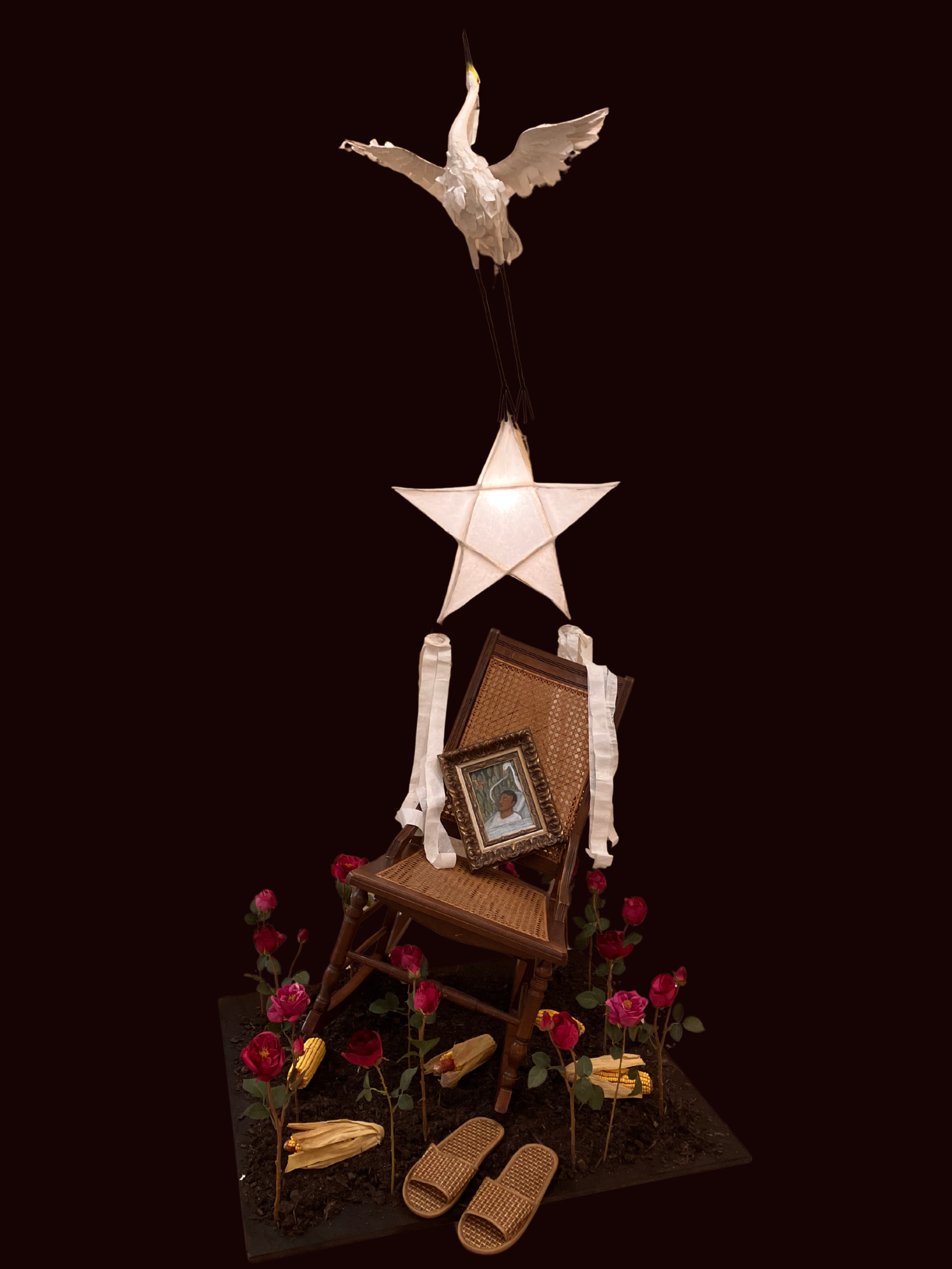Tumba, Tumba
2024
Wood, Found Objects, Metal, Paper, Soil
8’ x 8’ x 8’
Tumba, Tumba is a sculpture installation rooted in wordplay and layered cultural meanings. In Tagalog, tumba means “to fall,” while tumba-tumba refers to a rocking chair. In Spanish, tumba means “tomb.” These overlapping definitions shape both the conceptual and formal structure of the work, which reflects on the lives and deaths of my parents, Vicente and Milagros.
Both of my parents passed away during the Christmas season—my father, Vicente, from a heart attack in his sleep on January 6, 1991, the Feast of the Three Kings; and my mother, Milagros, on December 27, 2020, alone in a hospice during the height of the pandemic.
My father’s death was the foundational trauma of our family. While it marked his physical departure, it also marked the beginning of my mother’s emotional withdrawal. She never fully processed her grief and, in her silence, left her children emotionally unmoored.
This installation is a way of remembering who my parents were to me—an attempt to make sense of the bittersweet memories they left behind. In creating this work, I aim to empathize with them and with my younger self. Tumba Tumba is both an act of remembrance and an act of forgiveness: a gesture of understanding them with compassion rather than resentment.
The installation features a fallen rocking chair embedded in a dirt-covered tomb, scattered with corn husks and pierced by thorny, long-stemmed red roses growing from the ground. Hovering above is a suspended heron carrying a luminous parol, the traditional Filipino Christmas lantern. Resting on the chair is a miniature death portrait of my father, adorned with red paper flowers handmade by my mother—perched precariously, as if about to fall. Each element carries personal and symbolic meanings.
The rocking chair recalls stories of my father rocking my twin brother and me to sleep, often dozing off himself. The dirt tomb represents grief—and how I, too, fell into it and remained stuck. The corn husks reference a formative moment from my childhood: when I was told my father had died, I locked myself in the room with his body. I refused to let anyone in until my nanny negotiated with me to give him up in exchange for roasted corn. I was three years old.
The red roses—my mother’s favorite flower—stand for both her presence and her pain. My father often gave her roses, and she carried a bouquet of them at his funeral. But like the roses she loved, she had thorns. Her grief and unhealed sorrow caused pain for those of us left behind.
The heron, a symbol of the soul and the afterlife in Filipino culture, soars above the scene, carrying the parol that links their passing to the season of their deaths. The lantern, a symbol of hope and celebration, illuminates the memory of their lives and our shared history.
In Tumba Tumba, I gather fragments—of language, of memory, of symbol—and reassemble them into a visual narrative. Through this process, I lift the complicated and contradictory layers of my parents' lives and deaths, and in doing so, seek to honor and recognize their full humanity.

